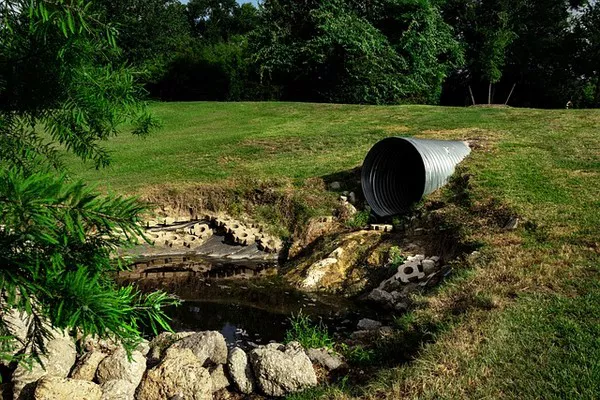In the quest for sustainable wastewater treatment solutions, modern technology has evolved to improve the efficiency and effectiveness of sewage treatment plants (STPs). One such innovative approach is the Moving Bed Biofilm Reactor (MBBR) technology, which has gained prominence due to its ability to address the growing challenges associated with wastewater management. This article explores the key components, working principles, advantages, and applications of MBBR technology in STPs.
What is MBBR Technology?
MBBR, short for Moving Bed Biofilm Reactor, is a biological wastewater treatment process that utilizes a combination of suspended growth and attached growth systems. The key distinguishing feature of MBBR technology is the use of plastic media carriers that provide a surface for the growth of microorganisms. These carriers move freely within the reactor, providing an ideal environment for the colonization of beneficial bacteria.
Key Components of MBBR Technology
Media Carriers: The heart of the MBBR system, plastic media carriers, are typically made of materials like polyethylene or polypropylene. These carriers offer a large surface area for the attachment and growth of biofilm, which houses the microorganisms responsible for wastewater treatment.
Reactor Tanks: MBBR systems consist of reactor tanks where the wastewater is introduced, and the media carriers are allowed to circulate freely. The design and size of these tanks depend on the specific requirements of the STP.
Aeration System: Proper aeration is essential for MBBR systems as it ensures the adequate supply of oxygen to the microorganisms, facilitating the biological breakdown of organic matter in the wastewater.
Effluent Clarification: After treatment, the effluent is subjected to a clarification process, such as settling or sedimentation, to remove any remaining solids and suspended particles.
How Does MBBR Technology Work?
The MBBR process involves the following stages:
Inoculation: To start the treatment process, the MBBR reactor is inoculated with a seed culture of microorganisms. These microorganisms attach themselves to the media carriers’ surfaces and begin forming a biofilm.
Wastewater Treatment: As the wastewater flows into the reactor, it comes into contact with the biofilm-covered media carriers. The microorganisms on the carriers metabolize and break down the organic pollutants in the wastewater into simpler compounds through a biological oxidation process.
Aeration: Continuous aeration is maintained to ensure that the microorganisms have a constant supply of oxygen for their metabolic activities. This helps in achieving efficient and rapid degradation of organic matter.
Settling and Clarification: After treatment, the water is directed to a settling or clarification tank where the treated effluent is separated from the biofilm carriers and any remaining suspended solids.
Discharge: The clarified effluent, now free from most contaminants, can be safely discharged into the environment or further treated if required to meet specific water quality standards.
Advantages of MBBR Technology
High Treatment Efficiency: MBBR technology offers excellent wastewater treatment performance, effectively removing organic pollutants, nitrogen, and phosphorus compounds.
Compact Design: MBBR systems are known for their compact design, making them suitable for both new STPs and retrofitting existing ones with limited space.
Flexibility: MBBR systems can be easily customized to accommodate variations in wastewater flow and composition, making them adaptable to changing conditions.
Low Energy Consumption: Compared to conventional activated sludge systems, MBBR technology typically requires lower energy for aeration, resulting in reduced operational costs.
Minimal Sludge Production: MBBR systems generate less excess sludge, reducing the costs associated with sludge handling and disposal.
Resilience to Shock Loads: MBBR reactors can withstand shock loads and variations in influent quality, making them robust and reliable for wastewater treatment.
Applications of MBBR Technology
MBBR technology finds extensive application in a variety of wastewater treatment scenarios, including:
Municipal Wastewater Treatment: MBBR systems are widely used in municipal STPs to treat domestic wastewater, ensuring compliance with effluent quality standards.
Industrial Wastewater Treatment: Many industries, such as food and beverage, chemical, and pharmaceuticals, employ MBBR technology to treat their wastewater streams effectively.
Decentralized Wastewater Treatment: MBBR systems are suitable for decentralized wastewater treatment in remote or rural areas where centralized STPs are not feasible.
Upgrading Existing STPs: MBBR technology can be retrofitted into existing activated sludge systems to enhance treatment performance and capacity.
Conclusion
MBBR technology represents a significant advancement in wastewater treatment, offering an efficient, flexible, and sustainable solution for STPs. Its ability to combine the benefits of suspended and attached growth systems, along with its compact design and minimal operational costs, make it an attractive choice for various wastewater treatment applications. As environmental regulations become stricter and the need for sustainable wastewater management grows, MBBR technology is poised to play a crucial role in addressing these challenges and ensuring the protection of our water resources.

